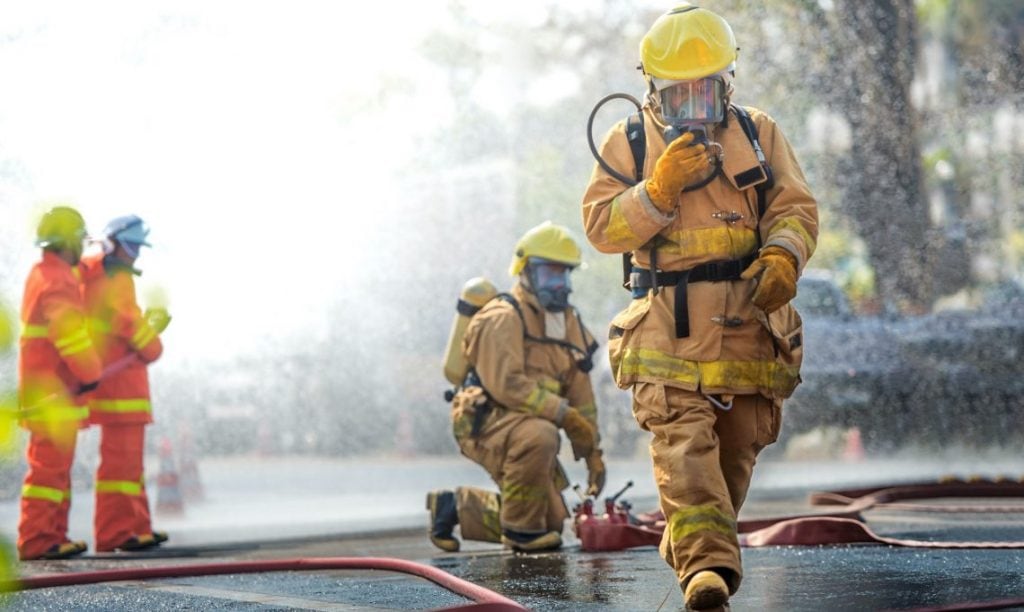With no end to the pandemic in sight, understanding the nature of the beast and how to lessen its bite will make us happier individuals and better firefighters.
By any measure, the COVID-19 pandemic is a crisis, and it is shaping up to be more chronic than acute. People cope with crises in stages, much like grieving the loss of a loved one. Noted grieving expert Elizabeth Kubler-Ross outlined five stages of grief: denial, anger, bargaining, depression, and acceptance. We too have our stages.
Since the onset of the pandemic, firefighters and medics have been at the front of the front lines. They’ve faced the constant risk of close contact with patients who may or may not have been tested and others who may or may not have symptoms (some with phantom symptoms). And they’ve done all of this in an ever-changing landscape of what is known about the virus and how to best protect against it. They’ve struggled with infections at the firehouse and all the associated stress that comes with it — fear of contracting it, fear of giving it to friends and family, forced quarantine, concern for those infected, and the strain of covering for those out with the illness. Worse yet, there’s no real end in sight.
Behavioral scientists say we are experiencing crisis fatigue. And as with grief, they’ve identified different stages. Researchers at the Harvard Medical School’s and Ohio State University’s Stress, Trauma, and Resilience (STAR)1 program named four stages: heroic, honeymoon, disillusionment, and fatigue. The heroic stage is what we experienced early on when everyone banded together to address the COVID crisis. The honeymoon stage is when people recognize they are in the same boat — think drive-by birthday parties and signs of support for first responders. But the last two are the most critical.
The disillusionment stage is when we start to feel physically and emotionally exhausted. Scientists believe this comes from a prolonged overload of fight-or-flight hormones. In a chronic crisis like this pandemic, those feelings of “we’re all in this together” are replaced with anger, despair, and irritation. That’s where many found themselves in the late summer and autumn. The fatigue stage is marked by things like being pessimistic, burned out, withdrawn, and gripped by a sense of meaninglessness. Here, people are likely to engage in behaviors detrimental to themselves and others.
OSU’s Associate Director of STAR Arianna Galligher writes that many will experience signs and symptoms of Post-Traumatic Stress Disorder or moral injury. Here’s how she describes moral injury.2
While a diagnosis of PTSD involves the additional presence of specific symptoms related to experiencing a traumatic event, moral injury can be just as distressing. When stressors accumulate and layer on top of one another, as they have been this year, many people are left to grapple with both concrete and existential questions related to “why” and “what if.”
Under normal circumstances, firefighters face a tremendous risk of mental health injury; the potential effects of crisis fatigue from COVID-19 are especially worrisome.
To cope with crisis fatigue, Galligher recommends choosing to spend your energy on things you can control and to choose which battles to engage in and know when to walk away from them. She also says to focus on those things that bring hope and joy and to take time for self-care — that includes getting support and professional help.
Kaye Hermanson, a UC Davis Health clinical psychologist,3 adds that it is important to be compassionate to yourself. Don’t wallow in mistakes, she says, nobody prepared us for this situation. She also advises to get more exercise — something firefighters should be doing anyway. “It’s still the No. 1 best thing we can do for coping,” she says. “It releases endorphins and gets some of the adrenaline out when the frustration builds up.”
Fire service manufacturers have also struggled during the pandemic. Like fire departments, they’ve had to find ways to control the spread of the virus among their workforce. They’ve also had the pressure of ensuring adequate inventory amid labor and supply chain issues. The pressure, of course, is not just keeping their companies afloat financially, but being able to deliver what the fire service needs, when it needs it.
Brent Hostler, CEO of Groves Inc., says early on they worked to remain calm in the chaos. They relied on over-communicating to stay on top of the highly fluid situation. Later, he says, they realized there was such a thing as Zoom fatigue and dialed back their level of internal meetings. As they move forward into equally uncertain times, Hostler says, “I see another transition period where keeping people engaged virtually will be tough, but not everyone will be ready to sit down face to face. The changes we make, in part, will need to be tailored to the comfort level of those we are working with.”
Crisis fatigue effects the fire service both internally and externally — the public we treat and protect are suffering from it as are our fellow firefighters. To best serve our population, we must take care of ourselves and those on our team. The fire service will face more pressure during latter stages of COVID fatigue to bring order to chaos, but that’s what we do best.
1. https://medicine.osu.edu/departments/psychiatry-and-behavioral-health/star
2. https://wexnermedical.osu.edu/blog/how-to-cope-with-crisis-fatigue
3. https://health.ucdavis.edu/health-news/newsroom/coping-with-covid-fatigue-20-tips-for-processing-wildfires-smoke-blackouts-and-more/2020/09


